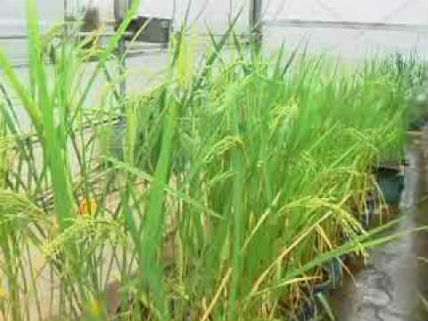More Efficient Photosynthesis Transferred From Corn Into Rice: Could Boost Yields 50 Percent
Malthusian doomsters foiled again.

Researchers associated with the International Rice Research Institute are reporting C4 photosynthesis success on the way toward dramatically boosting the productivity of grains like rice and wheat that use less efficient C3 photosynthesis. According to Technology Review:
In December, geneticists announced that they'd made a major advance in engineering rice plants to carry out photosynthesis in a more efficient way—much as corn and many fast-growing weeds do. The advance, by a consortium of 12 laboratories in eight countries, removes a big obstacle from scientists' efforts to dramatically increase the production of rice and, potentially, wheat. It comes at a time when yields of those two crops, which together feed nearly 40 percent of the world, are dangerously leveling off, making it increasingly difficult to meet rapidly growing food demand.
The supercharged process, called C4 photosynthesis, boosts plants' growth by capturing carbon dioxide and concentrating it in specialized cells in the leaves. That allows the photosynthetic process to operate much more efficiently. It's the reason corn and sugarcane grow so productively; if C4 rice ever comes about, it will tower over conventional rice within a few weeks of planting. Researchers calculate that engineering C4 photosynthesis into rice and wheat could increase yields per hectare by roughly 50 percent; alternatively, it would be possible to use far less water and fertilizer to produce the same amount of food.
Getting the C4 pathway to work at all in rice and wheat is just the first step. However, the fantastic new CRISPR gene-editing technology should speed the process of developing more efficient grain crops up substantially. The researchers believe that the first upgraded rice and wheat varieties could be available to farmers in a decade. The spectre of famine recedes ever further. Take that Paul Ehrlich!


Show Comments (34)